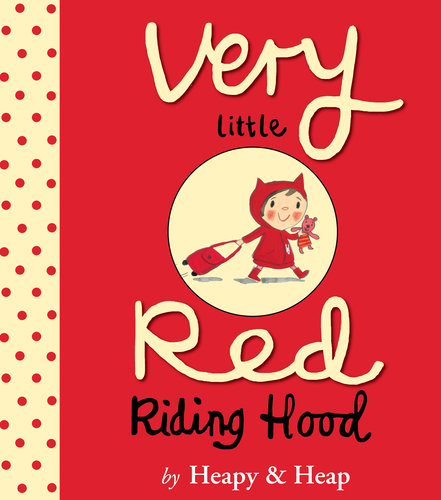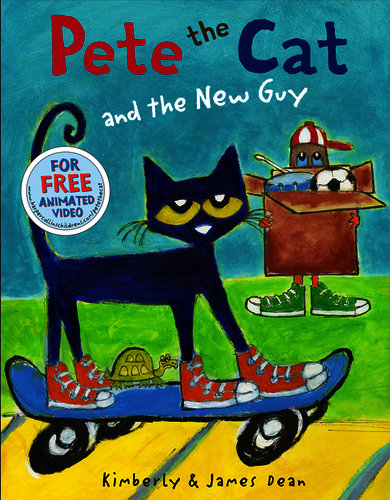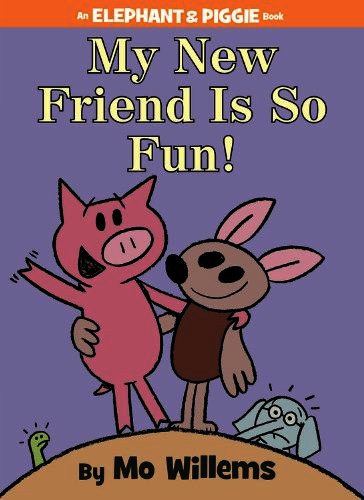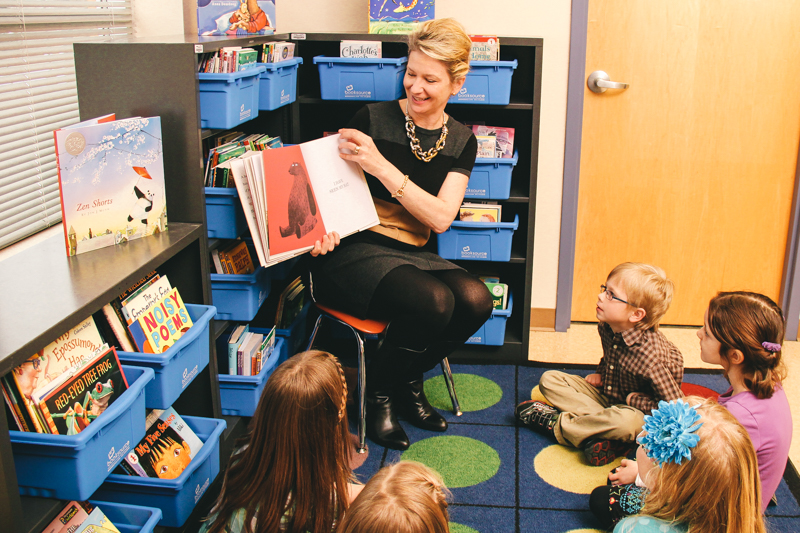Using the same read alouds each school year can cause a good book to go stale for both the audience and the reader. Shake up your read-aloud routine with these five new favorites. Each title offers something a bit different while still staying within the boundaries of a familiar plot-line: an unusual format paired with an easily relatable story, a new tale that feels like a classic, a hilarious twist on a familiar story or new installments in well-loved series.
The Story Starts Here by Caroline Merola
(Grades P-2, Level J)
In this mixed-up tale a young wolf is having quite the contrary day.  Little Wolf has decided everything is going to be opposite—he will eat dessert first, wear his pants on his head, and he will begin his story at the end. To follow Little Wolf’s story, readers must literally begin with the back cover and turn the pages in the opposite direction. Little Wolf’s behavior eventually earns him a trip to his room to think about how he has been acting. Feeling angry and misunderstood, Little Wolf decides to run away from home. However, the woods turn out to be a scary place for a young wolf when he realizes all of the animals are running from a mysterious monster. To figure out who the monster is, the book must now be flipped upside down. The unusual layout of the book and familiar fairytale elements make it a fun and engaging read aloud that kids will surely want to get their hands on.
Little Wolf has decided everything is going to be opposite—he will eat dessert first, wear his pants on his head, and he will begin his story at the end. To follow Little Wolf’s story, readers must literally begin with the back cover and turn the pages in the opposite direction. Little Wolf’s behavior eventually earns him a trip to his room to think about how he has been acting. Feeling angry and misunderstood, Little Wolf decides to run away from home. However, the woods turn out to be a scary place for a young wolf when he realizes all of the animals are running from a mysterious monster. To figure out who the monster is, the book must now be flipped upside down. The unusual layout of the book and familiar fairytale elements make it a fun and engaging read aloud that kids will surely want to get their hands on.
The King of Little Things by Bil Lepp
(Grades P-2, Level M, Lexile AD730)
This creative fable about greed and contentment is sure to entertain younger readers, but older elementary students will also love deciphering the humorous illustrations. The message of the story hits home for our consumer culture where everyone seems to want more. The wonderfully detailed illustrations and clever wordplay provide lots of material for further examination. The story revolves around the King of Little Things, a kind ruler who feels he has all he needs, and is content to rule over the small things in his world such as paper clips and fried bologna. King Normous, however, is not happy with what he has, and wants to rule the entire world. When his steward points out that he has overlooked conquering the King of Little Things, King Normous vows to “put this tiny king in his very small place.” Student laughter is sure to roll when the small subjects of the King of Little Things rebel against King Normous, and his soldiers find “mealworms in their bread, chiggers in their underpants, and fungus between their toes” and “every little thing, everywhere refused to work.” The rhyme and alliteration throughout the story make it an engaging read aloud, and the vocabulary offers some teaching opportunities with younger audiences. All ages will enjoy going back through the book to pore over the funny and fantastic details in the illustrations.
wordplay provide lots of material for further examination. The story revolves around the King of Little Things, a kind ruler who feels he has all he needs, and is content to rule over the small things in his world such as paper clips and fried bologna. King Normous, however, is not happy with what he has, and wants to rule the entire world. When his steward points out that he has overlooked conquering the King of Little Things, King Normous vows to “put this tiny king in his very small place.” Student laughter is sure to roll when the small subjects of the King of Little Things rebel against King Normous, and his soldiers find “mealworms in their bread, chiggers in their underpants, and fungus between their toes” and “every little thing, everywhere refused to work.” The rhyme and alliteration throughout the story make it an engaging read aloud, and the vocabulary offers some teaching opportunities with younger audiences. All ages will enjoy going back through the book to pore over the funny and fantastic details in the illustrations.
Very Little Red Riding Hood by Teresa Heapy
(Grades P-3)
This re-telling of the classic folktale is as much fun for the reader as it is for the audience. Very Little Red Riding Hood is going to her Grandmama’s house for a sleepover. However, expectation s are turned on their head when she inevitably encounters the Wolf in the woods: instead of being scared, she runs to him yelling, “A foxie!” and gives him a big hug. As the tale unfolds, the power balance between the Wolf and Very Little Red Riding Hood is quite different from the traditional version of the fairytale. When the Wolf asks if she is afraid of him, Very Little Red Riding Hood declares, “I not scared! I Very Little Red Riding Hood, that’s what I am!” Like many toddlers, Very Little Red Riding Hood is determined to get what she wants, and the Wolf is quickly swept up in her plans with Grandmama (which include comical scenes of tea parties and games of hide-and-seek). Very Little Red Riding Hood’s “toddler dialect” makes this title a perfect read aloud, lending itself well to voicing her character so even young children can appreciate the humor in it. This alternate version of a traditional tale also offers lots of opportunities for kids to practice their predicting skills and to compare texts.
s are turned on their head when she inevitably encounters the Wolf in the woods: instead of being scared, she runs to him yelling, “A foxie!” and gives him a big hug. As the tale unfolds, the power balance between the Wolf and Very Little Red Riding Hood is quite different from the traditional version of the fairytale. When the Wolf asks if she is afraid of him, Very Little Red Riding Hood declares, “I not scared! I Very Little Red Riding Hood, that’s what I am!” Like many toddlers, Very Little Red Riding Hood is determined to get what she wants, and the Wolf is quickly swept up in her plans with Grandmama (which include comical scenes of tea parties and games of hide-and-seek). Very Little Red Riding Hood’s “toddler dialect” makes this title a perfect read aloud, lending itself well to voicing her character so even young children can appreciate the humor in it. This alternate version of a traditional tale also offers lots of opportunities for kids to practice their predicting skills and to compare texts.
Pete the Cat and the New Guy by James Dean
(Grades P-3, Lexile AD510)
This new book in the Pete the Cat series is written in the same cool-cat rhythm that has made Pete a favorite read aloud among preschoolers and kindergartners everywhere. In this adventure, there’s a new guy in town named Gus the Platypus. Always up for something new, Pete is excited to meet Gus, but they have trouble finding activities they can enjoy together because Gus cannot do all of the things that Pete and his friends can do. The rhyme and rhythm keep the story moving, and the repetition of key phrases throughout offers opportunities for the audience to join in. The day-by-day structure of the book will support lessons teaching the days of the week. The story also carries a positive message about accepting our differences and finding our special talents.
My New Friend Is so Much Fun! by Mo Willems
(Grades P-2)
The latest installment in the Elephant and Piggie series addresses the mixed feelings that arise when best friends begin playing with new people. Adventurous and fun-loving Piggie has a found a new friend named Brian Bat. Piggie’s best friend Gerald is happy that Piggie has found a new friend and that they are having fun playing together, but Gerald begins to wonder if he’s being replaced and if Piggie is having more fun with Brian than she does with him. Snake, Brian Bat’s best friend, and Gerald decide to confront Piggie and Brian with their feelings and are met with a pleasant surprise. Like the other titles in this popular series, this book is presented entirely in easy-to-read dialogue and lends itself well to multiple read-aloud purposes. It could be used as a straight read aloud, but would also serve nicely for reading with a student or as a reader’s theater piece by assigning characters to different readers.








Leave A Comment